We're an affiliate
We hope you love the products we recommend! Just so you know, we may collect a share of sales or other compensation from the links on this page at no additional cost to you. Thank you if you use our links, we really appreciate it!
Pugs are those small dogs with flat noses and wrinkled faces. They have earned the nicknames Dwarf Mastiffs and Dutch Mastiffs due to their unique appearance.
Many people believe that pugs are the oldest dog breed yet. This is due to their mention in 551 BC by Confucius.
Due to their long association with humans, they are very friendly and charming dogs with fond interaction skills with children.
Pugs will often feel bored when they spend a lot of time alone. This dog breed always enjoys the company of other pets and humans.
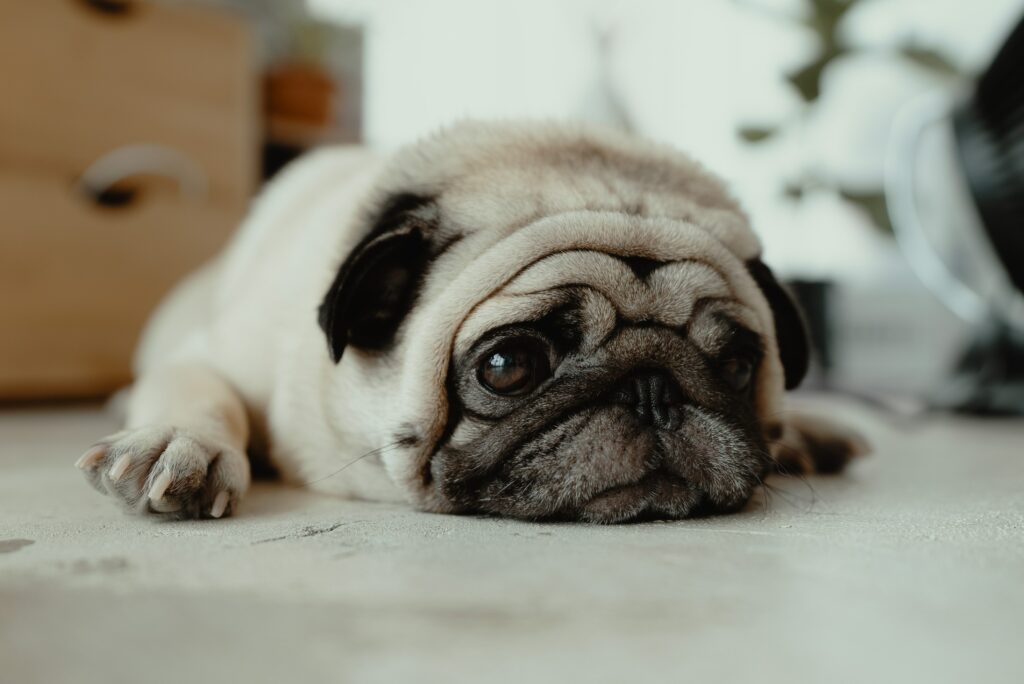
A few people have held the misconception that pugs have continuous health issues arising from wrong breeding. This is far from the truth. Pugs are good pets and they will certainly offer you the good companion you deserve.
There are some health issues that are however common in pugs alone owing to their breed type and susceptibility to certain conditions.
It might not be easy to guess the signs and symptoms of illnesses in your little pug because they are usually more serious sometimes.
This should make every pug owner aware of some of the health problems that have been characteristically associated with pugs.
As a caring pet parent, you need to know a few things about pugs and the health conditions that they are most likely to suffer from. In this post, I will take you through the 7 common health problems in pugs.
When you recognize some of these symptoms early enough, it will be much easier to get a prescribed treatment from your vet to kickstart your dog’s recovery journey.
Pug, an interesting Pup!
Pugs have unique anatomy with a slightly big head which makes them interesting to interact with. The exceptional anatomy of pugs is a major root cause of the health issues they may face.
They are dog breeds that are easier to look after compared to other common breeds. They have a mix of charming and laid-back attitudes which makes it hard to comprehend their current mood.
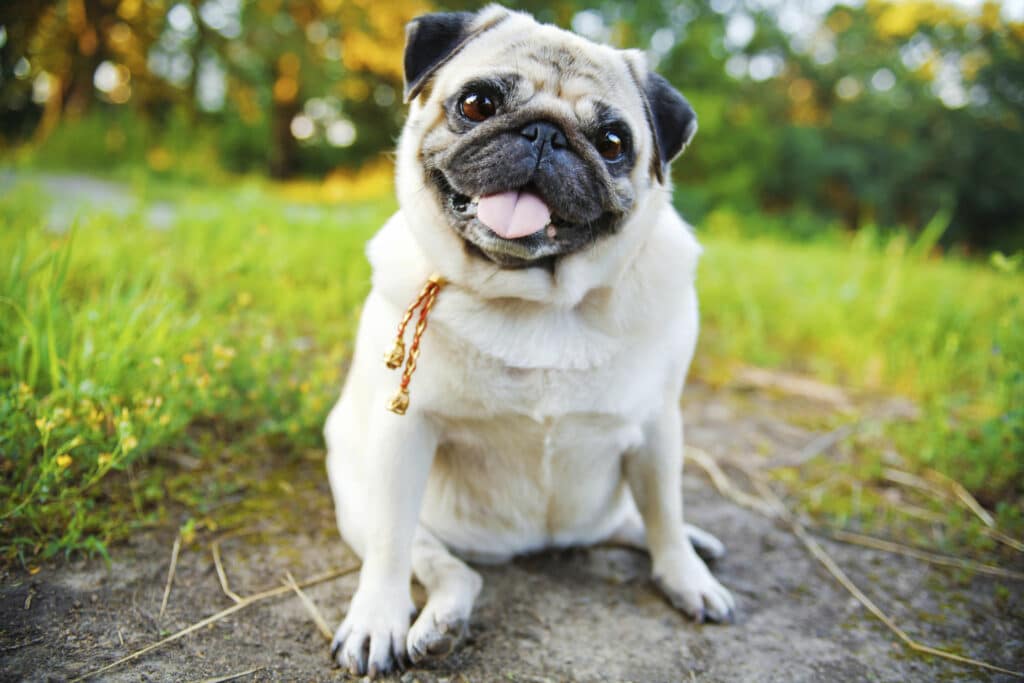
Adult pugs have a weight range of about 14-18 lbs (6.35 – 8.16 kg) for both males and females. Their full-grown height ranges between 11 to 12 inches which makes them a short dog breed.
These little fellows can have any of the following colors on their coats; Black, Apricot – fawn, all with black muzzle or mask with black ears.
Taking Care of Your Pug at Home
Pugs are adorable dogs to have. They are funny at times and can make a good pet companion if you get the best from them.
Many people find pugs interesting because of their unique appearance and anatomy. It doesn’t matter whether you love bigger or smaller dogs, I can assure you that pugs are very interesting breeds to have and they will always steal your attention once you own one.

If you have recently adopted a pug, you might be confused about the best caring methods to accord him in terms of diet, exercise, sleep, and regular care.
In this section, I will provide you with a short guide on the best pug-caring methods that you can adopt to keep your little pup happy all the time.
Taking proper care of your dog will also go a long way in ensuring that he remains healthy and stays away from prone health conditions.
1. Feeding your Pug
Pugs are considered less active compared to other breeds and so they do not utilize much energy as others do.
You can easily spot your pug idling around while other pets are busy playing all over the house. Due to this trait, it is important that you check on the food portion that you give him during meal times.
Enough portion is necessary for him to get the strength he needs for his minimal activities.
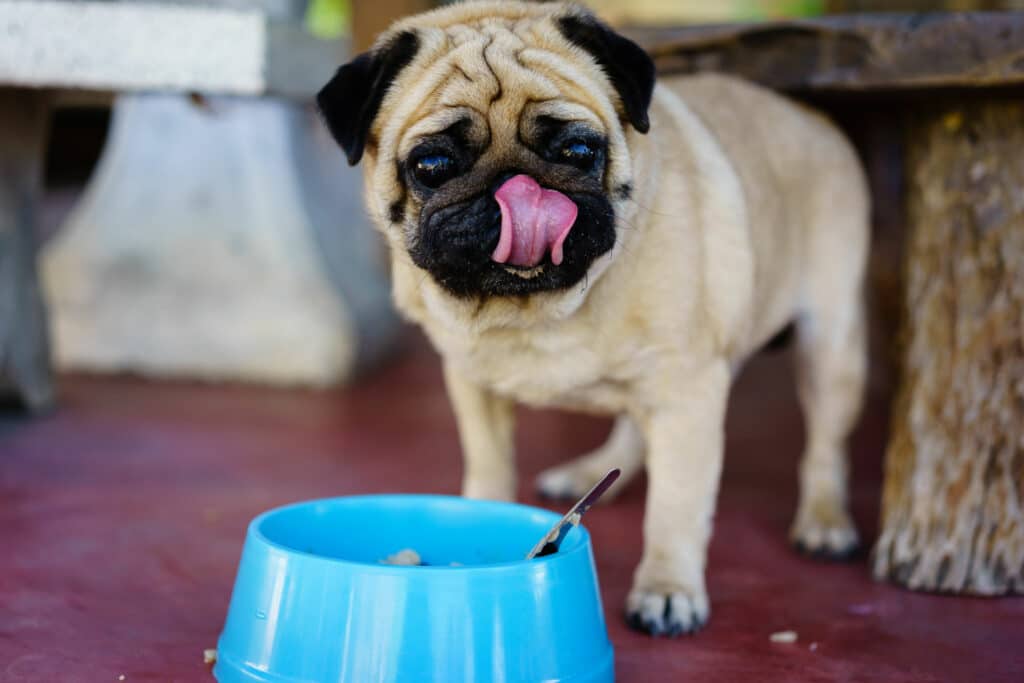
You also need to maintain a regular feeding pattern for your pug. Do not change the time and amount of food you give him too often. Careful observance of a good feeding plan for your pug will also ensure that he does not suffer some health concerns related to diet.
2. Regular exercises
Exercising with your dog is one of the best ways to keep him happy and calm. Providing regular exercise to your dog prevents him from acquiring certain behavioral issues that will certainly not be good. You can set aside 15 to 25 minutes sessions daily for exercising your adult pug.

Exercise will keep your pug engaged physically and keep him fit always. It is also a good way to ensure that your dog does not get some common health problems that are related to a lack of exercise.
You can also build your pug’s mental strengths by providing him with his favorite interactive dog toys to play with.
3. Regularly bathing your pug
Some health problems in pugs are caused by lodged bacteria and parasites on their skin. You can ensure that your lovely dog is free from these foreigners by bathing him regularly.
Giving him one bath a month is good enough to keep his skin clean however some people do it on a more regular pattern and it is still fine.
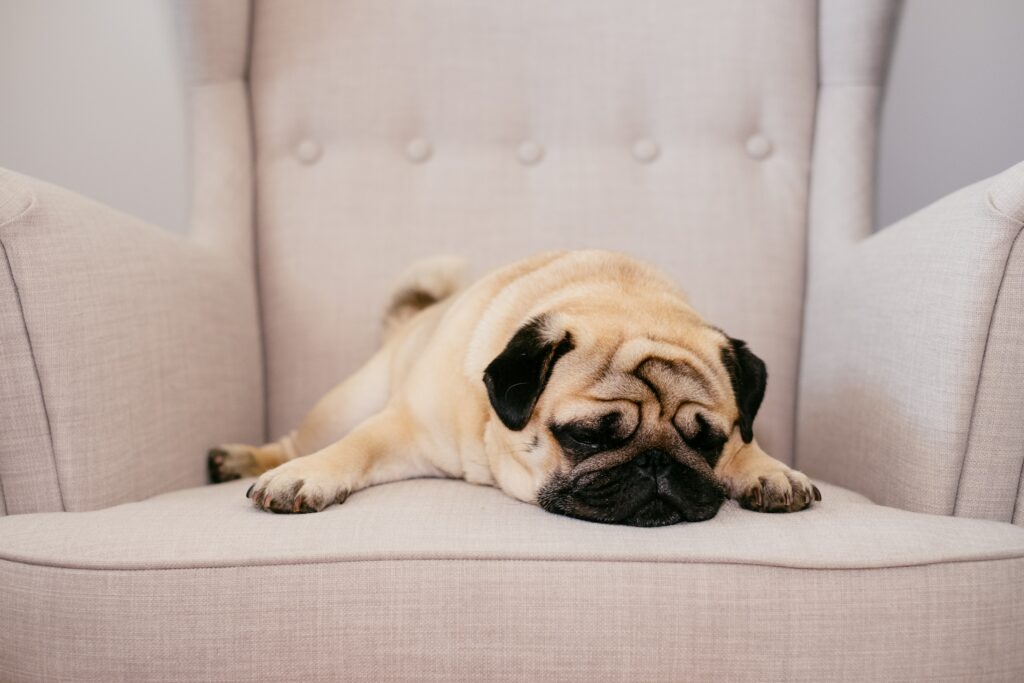
If your pug comes back home with more noticeable dirt, then it is good to bathe him instantly to keep him clean.
Do not wait for your scheduled days to clean him. Noticeable dirt always needs to be removed from his body.
Of particular interest should be your pug’s facial folds. The facial folds of your pug play host to food, saliva, and other debris material that might be harmful.
These materials hosted in the fold attract bacteria and other parasites. Aside from that, they contribute to a bad smell that is not good for the dog and you.
The facial folds should be cleaned at least once a week to avoid any bacteria build-up.
4. Other dog amenities
You should give your pug access and use of other common dog amenities for maximum health and fitness.
These include having a comfy bed for him to take care of his sleeping needs and alleviate any joint pains. You should also take care of his coat by regularly brushing his fur to remove any debris material and dead hair.
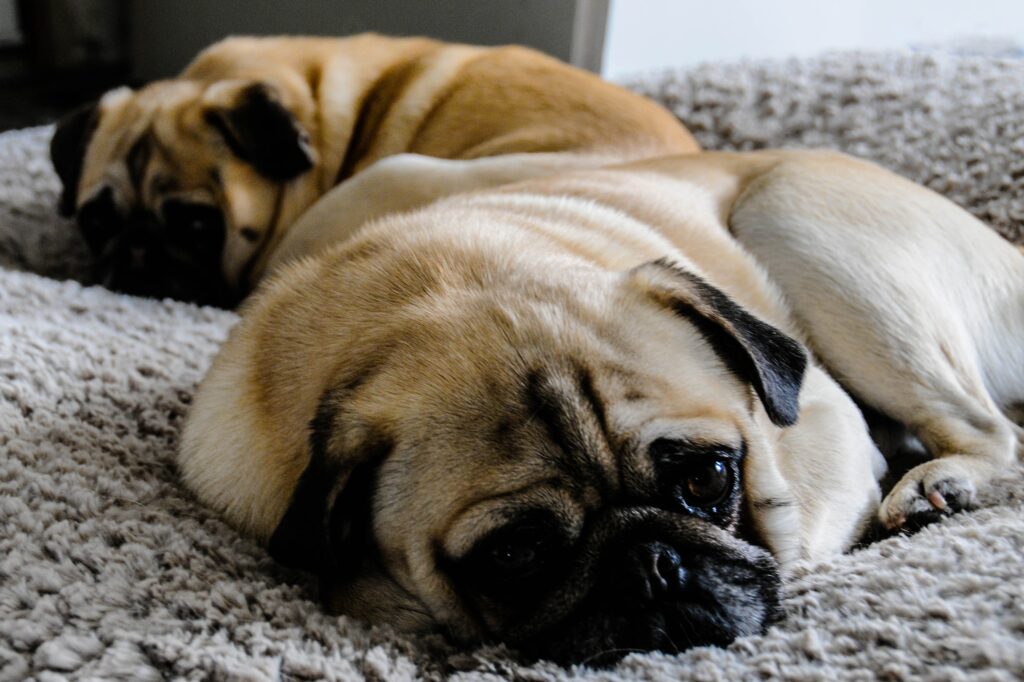
Giving your pug a decent dog house will ensure that he has his own space that assures him of his privacy whenever needed. Get some chew bones and toys for his dental care and mental stimulation.
What Health Issues Do Pugs Have?
Pugs, similar to other small dog breeds, are susceptible to health issues that are prone to them. Most of these conditions can be ascribed to their unique body structures and physiology.
Among the common health problems pugs have, there is none that we can say is completely incurable.
All these health issues can be prevented and cured when they are diagnosed in good time to prevent severe conditions.
1. Eye problems
Pugs have distinctive eyes that make them different from other dog breeds. These protruding eyes can however become a charm and cause them eye problems that are common to them.
Your pug is very susceptible to eye injury whenever he plays intensely because his protruding eyes can pick up scratches so easily. The scratch on the clear surface of the eye will lead to corneal ulcers.
Cornea ulceration and other eye problems in Pugs can cause them to sleep while opening their eyes partially as a way of reducing discomfort.
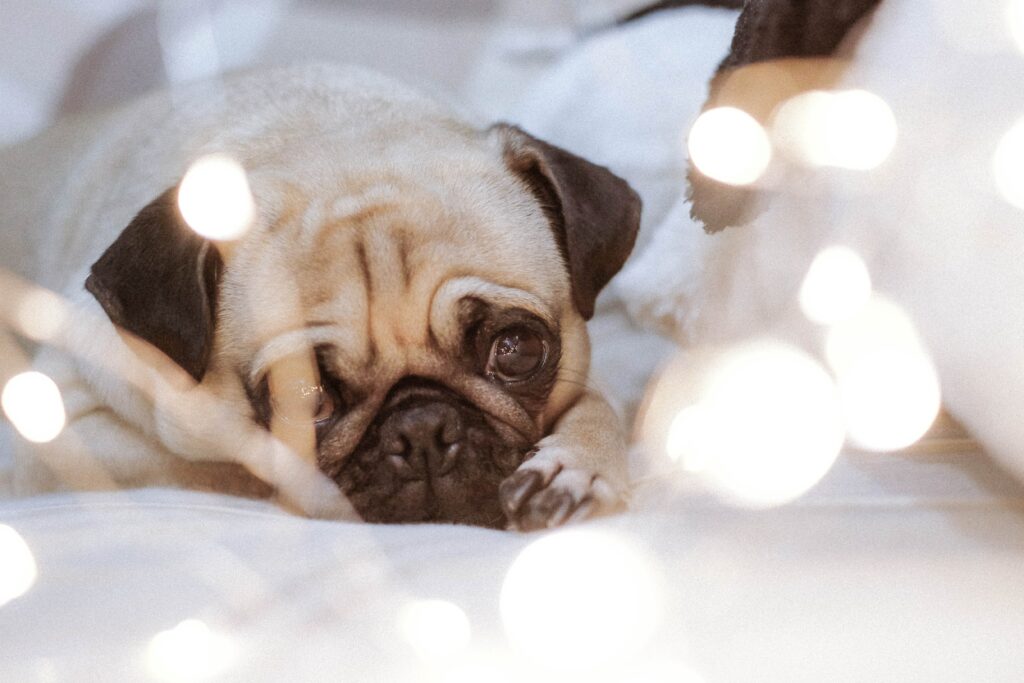
The top symptoms of eye ulcers in pugs are reddish and teary eyes. You need to watch out for these symptoms as early as possible for quick remediation. Some pugs develop severe eye ulcers which can be detrimental and require surgery to treat.
Other eye problems in pugs include Pigmentary keratitis, which is the condition whereby a pigment grows across the corneas of your pug. In some instances, blood vessels have been reported to grow across the eye surface.
A good percentage of pugs are affected by this eye problem in varying degrees of severity. When this condition is severe, your pug’s vision might be compromised and he may go blind.
You should take your little pup for regular vet visits because Pigmentary keratitis has been shown to respond to topical medications.
Macroblepharon is another eye problem in pugs and this is simply a condition where his eyelids become oversized. This eye condition can progressively lead to a disease on the surface of the eye if not handled well.
It is most common in pugs and other dog breeds with short noses. Macroblepharon in pugs increases their risk of getting pigmentary keratitis and corneal ulcers.
If your pug has excessive eyelid length, your vet can recommend a surgical procedure that will reduce the eyelid length and stabilize the tears on the corneas.
How To Prevent Eye Problems in Pugs
Possible eye problems in pugs can be prevented by taking an active approach. We recommend that you apply an eye ointment to your pug daily or twice per day. It is a particularly useful method of protecting dogs that have bulgy eyes like pugs.
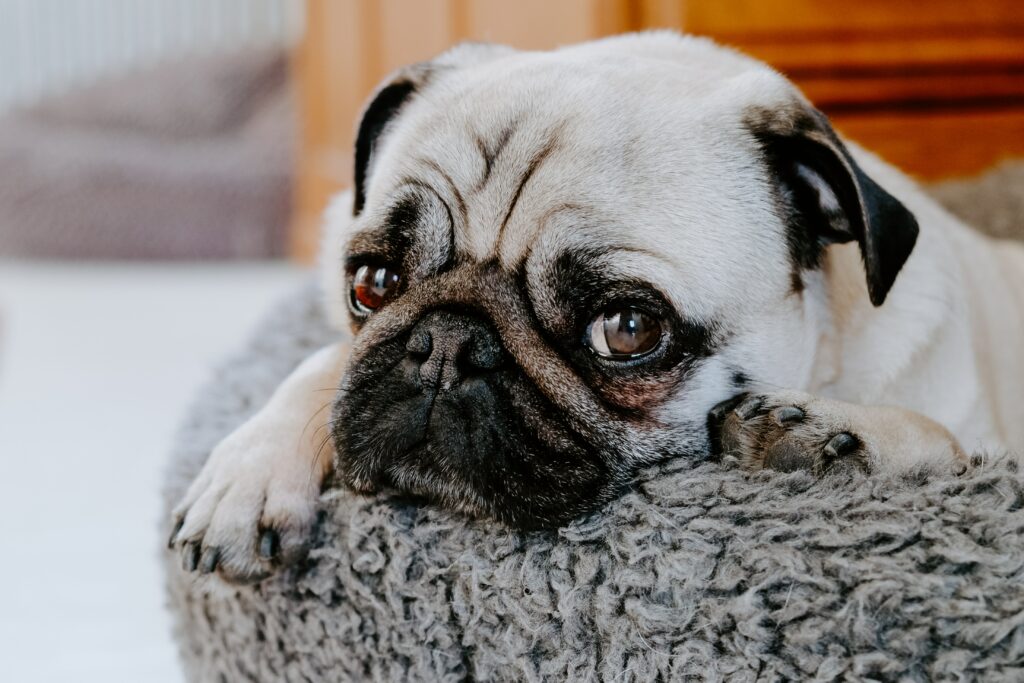
These ointments work by forming a protective layer on your pug’s corneas hence preventing him from likely eye problems.
It also stimulates the production of tears which is beneficial in nourishing your pug’s eye with hydration, oxygen, and removing dirt.
Other benefits of applying ointment to your pug’s eyes include preventing possible infections, refreshing the eyes, and softening the skin.
Another way to prevent possible eye problems with your pug is to get him to wear a protective eye shield e.g. Doggles whenever you are walking with him in risky areas.
Such areas may be those where he is prone to exposure to any hazard that may injure his eyes.
2. Brachycephalic Obstructive Airway Syndrome (BOAS)
The flat and compressed noses in pugs can be one of the reasons why your little friend will suffer from characteristic conditions.
The anatomy of the pug’s nose can lead to breathing difficulties and brachycephalic syndrome which is a condition that is exhibited by the inability to cool down.
BOAS can be caused by narrow nostrils, windpipe, and elongated soft palate. This anatomy combination can make your dog have a difficult time breathing in and out freely to the lungs.
BOAS can be of particular concern during the summer because your little pup will find it a little difficult to cool off.

Pug owners should pay much attention to BOAS since it is a very common health issue in this breed. A common sign that your pug is having difficulty in breathing can be seen when he intermittently stops during walks and makes noises trying to get air in.
If you notice these signs, do not force your pug to continue walking. Rather, you need to cool down with him and prepare to take him to the vet for proper diagnosis and medication.
How To Control BOAS
Since BOAS is a health problem that is very common in flat-faced dogs, the best way to prevent it is by careful breeding. Pugs should be bred with similar ones that have little to no history of suffering BOAS.
3. Skin conditions
Pugs have a specific type of skin that makes them different from other small dog breeds. One of the skin ailments that your pug can be prone to suffer is lip-fold pyoderma.
This skin condition is brought about by the moist environment on the folded skin along your pug’s jaws.
This environment is perfect for bacteria and yeast to lodge in and multiply, posing a health infection issue for your dog. The common signs of folded skin with bacterial infections are redness and smell.
If you observe these symptoms, you can examine your dog and take him for further assessment to your vet who might recommend antibiotic medication to counter this problem.
Your vet can also recommend the surgical removal of the excess skin fold to keep your dog’s risk of getting this condition as low as possible.
How To Prevent Skin Conditions
We recommend that you keep your pug’s skin clean all the time as a way to prevent him from acquiring adverse skin conditions.
Ensure that you bathe him regularly to remove all dirt and the possibility of externally hosting bacteria and parasites.
4. Allergies
Atopy is a skin allergy that is prone to pugs. It causes itchiness in your pup’s skin hence making him uncomfortable.
This skin condition will commonly attack your pug’s belly, ears, feet, and skin folds. A simply overlooked allergy can quickly turn into a detrimental infection that can compromise your pug’s well-being.
The most common symptoms of this condition are rubbing, scratching, and licking of the affected area. These symptoms will typically manifest between the first to the third year of your pug.
You can easily find many treatment procedures and medications for this condition. If you notice any of the said symptoms, do not hesitate to see your vet immediately.
Another skin condition called Demodectic Mange can be found in some pugs and is caused by Demodex spp. mites. This skin condition is hereditary/genetic.
How To Prevent Allergies in Pugs
The best way to deal with allergic reactions in your pug is to first get him diagnosed to establish what agents he is allergic to.
Once you have known the causative agents for his allergies, you can now go ahead and cut off all exposure to him from the causative substances.
The most common causes of allergies in pugs include chemicals, pollen, cigarette smoke, dust, and grasses among others.
Your pug might also be allergic to certain foods and food additives. Once you establish the foods that don’t go well with him, you might want to start avoiding such.
5. Patella Luxation
Patella, commonly known as the kneecap, is the bone that covers the knees and is located on the end of the femur bone.
Patella dislocation happens when the kneecap moves out of its normal place to a location near the groove.
This condition in pugs can be caused by genetic predisposition among other reasons. It is also very common among dogs of the toy family (Small breed dogs).
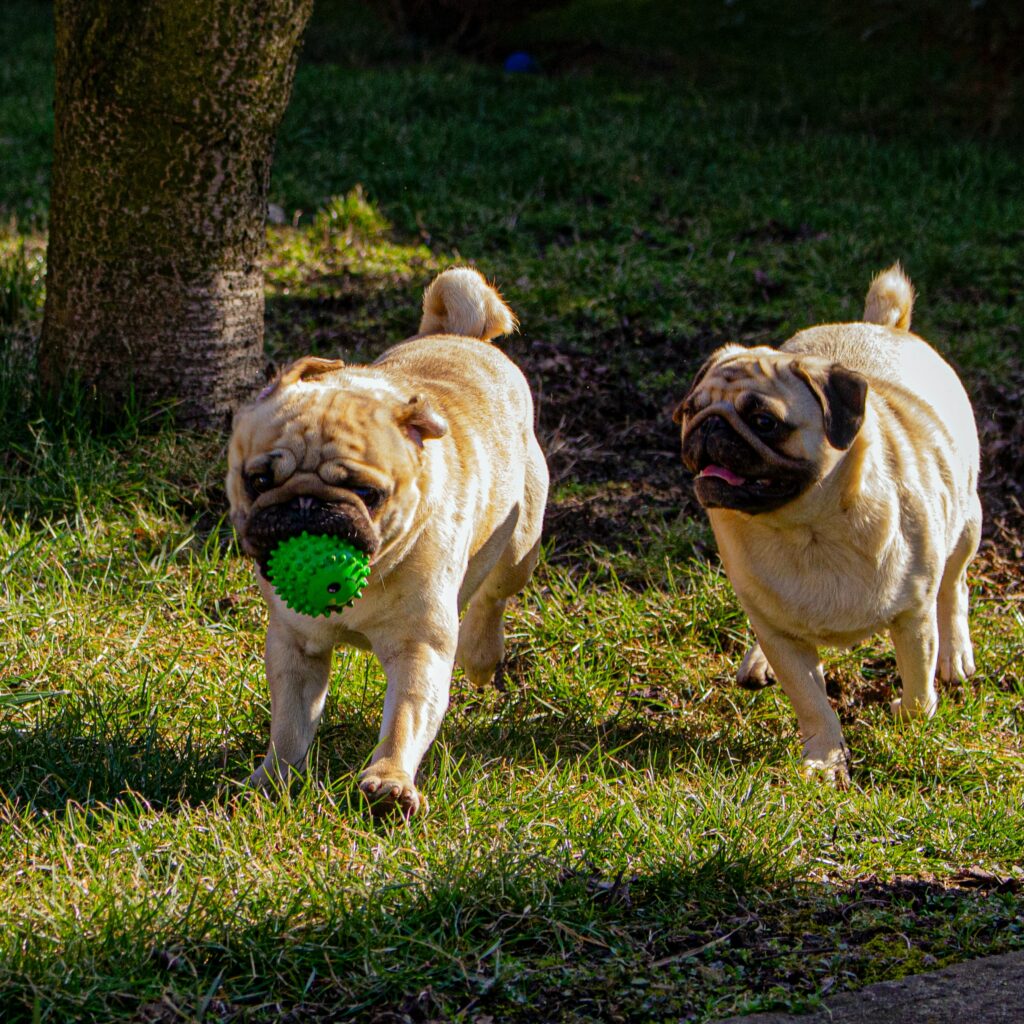
This health issue will suddenly cause pain to your pug and be accompanied by limping. In the event that the Patella relocates to its groove, it is common for the pain to linger on your dog’s knee a little longer.
In severe cases, surgery can be used to remedy this condition and prevent the same from easily occurring in the future.
As a precaution, Pug owners need to keep a closer look at their furry friends during playtime and exercises. There is much need to ensure that these activities do not strain your pup’s legs and knees.
How To Prevent Patella Luxation
Giving your pug a well-balanced diet is a good way of preventing him from dislocating his patella. Ensure that he gets enough calcium and phosphorus minerals which are key in strengthening his bones.
Alternatively, you can get a dietary supplement that is formulated with key minerals that will help to strengthen their knee bones. Something like Jope Chews can help delay the onset of arthritis and minimize pain and inflammation after surgery.
If your pug has a consistent history of a dislocated knee cap, you need to have him get surgery to correct the issue. Failure to handle this risk in time can expose your little pup to other knee-related injuries.
6. Legg-Calve-Perthes disease
Here is another disease that affects your pug’s bones. Legg-Calve-Perthes disease is said to be caused by a disruption in blood flow to the hip area.
This disruption will cause the bone to be weakened by disintegrating into smaller fractures causing him to limp with pain. Your pug will show progressive limping behavior as a sign of this ailment.
In severe cases, the pug will experience lameness in the affected leg and will find it difficult to move with ease.
This disease is common in younger pugs compared to their senior ones. It can be corrected surgically by removing the fractured parts of the bone.
Your young pug will then recover as new tissues will grow to replace the removed part hence forming a new joint. Most dogs recover fully from the surgical treatment of this condition aided by a little physiotherapy.
How To Prevent Legg-Calve-Perthes Disease
You can protect your lovely pug from getting this disease by giving him a well-balanced diet. His foods should contain the necessary nutrients for his general health.
On top of that, ensure that he gets a good supply of iron for his blood health, calcium, and phosphorus for his bone health.
You can go a step further and get some hip and joint supplements for dogs that are suitable for his age and conditions.
This will work to provide your little friend with the necessary nutrients that are needed for strong bones, and other nutrients that support his joints’ movement.
7. Pug Dog Encephalitis
Encephalitis is one of the health conditions in pugs that horrifies pug owners. This health condition is common in pugs and other small dog breeds.
Encephalitis is widely believed to be caused by an inherited autoimmune disorder.
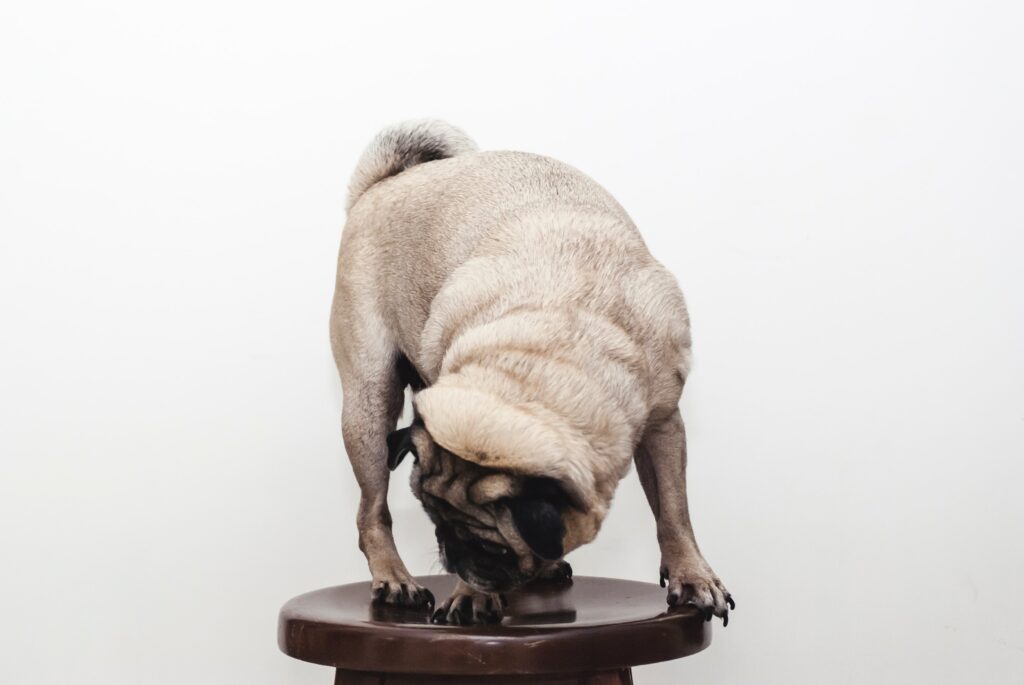
It causes inflammation of the brain which leads to seizures. Other symptoms of this disease include; collapsing, walking in circles and deterioration of visual capabilities, and abnormal walking style. In severe cases, a dog suffering from this condition will get into a coma
If your dog exhibits any Pug encephalitis symptoms, you need to seek medical attention immediately.
Your vet will recommend several tests to diagnose your dog’s conditions and prescribe the best medication for him.
Conclusion
Taking a step to know the possible health problems in pugs is a good way to equip yourself with the necessary knowledge required as a pug owner.
The major advantage of knowing these health issues in pugs is that you can know the signs and symptoms to look out for.
Early intervention will always be helpful when it comes to diagnosing and treating any health problem that your lovely pug may have.
Just because certain health conditions are prone to pugs, it does not mean that yours will certainly get it.
Your major task will be to ensure your lovely dog receives the appropriate environment, food, and medical check-ups that are needed to keep him free from most ailments.
Thank you for reading through this post. If you have any questions or concerns, please leave a comment below and I will be glad to get back to you.


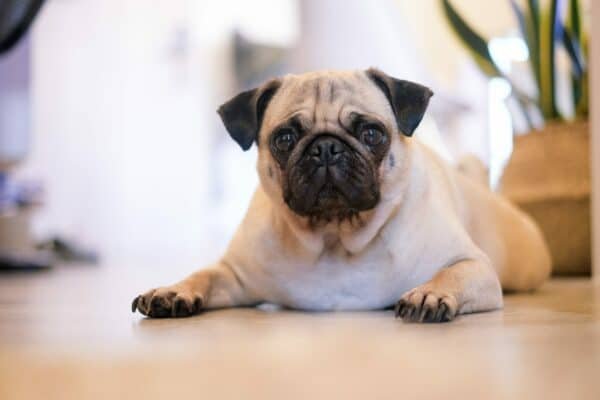

No responses yet